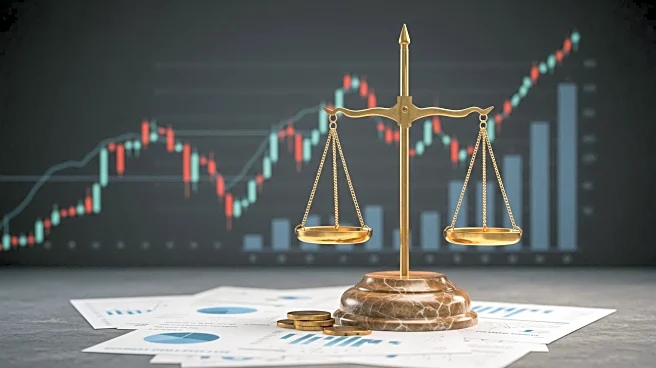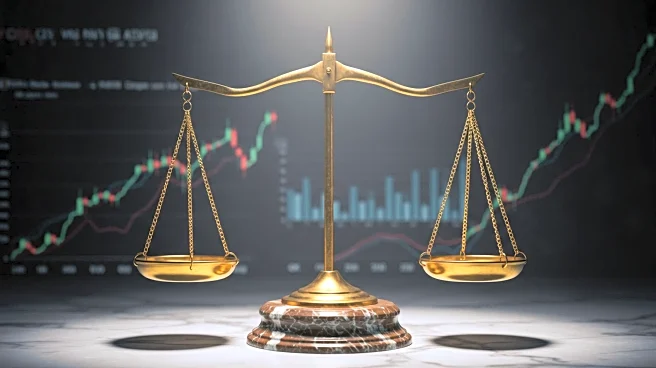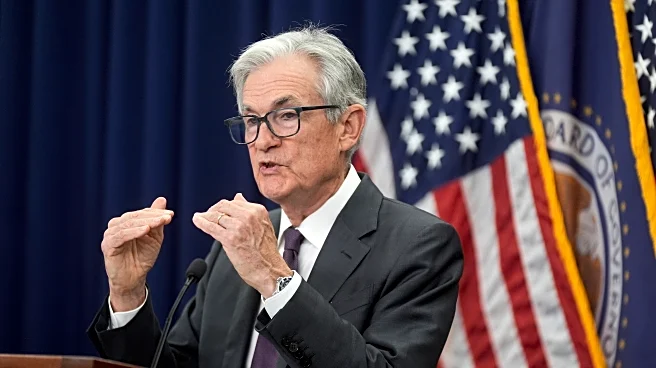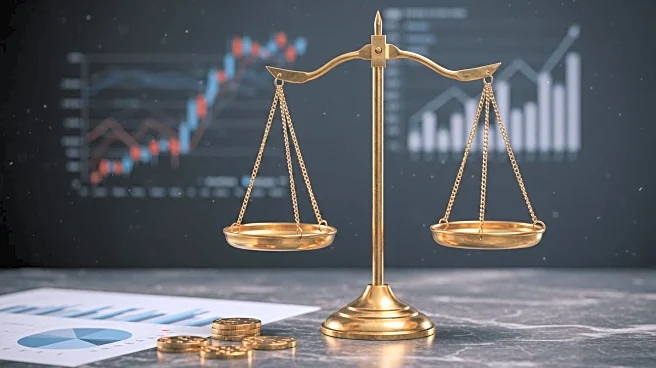What's Happening?
Investors are closely monitoring the upcoming Federal Reserve policy symposium in Jackson Hole, Wyoming, seeking insights into potential interest rate cuts. The event follows mixed economic signals from recent consumer and wholesale price data, which have been influenced by President Trump's import tariffs. Federal Reserve Chair Jerome Powell is expected to address these issues, with the market anticipating further rate cuts. The futures market predicts at least two more rate cuts this year, including one in mid-September. Companies benefiting from lower borrowing costs, such as homebuilders and cyclical stocks, have seen significant gains recently, driven by falling mortgage rates.
Why It's Important?
The Jackson Hole symposium is crucial for investors as it may clarify the Federal Reserve's stance on interest rates, impacting stock market performance. Lower rates generally benefit sectors like homebuilding and cyclical industries, which have already experienced gains. However, any indication from Powell that inflation concerns might outweigh other economic indicators could lead to market volatility. The event's outcome will influence investor sentiment and potentially affect the broader economy, as rate cuts are seen as a tool to stimulate growth amid tariff-related challenges.
What's Next?
The Federal Reserve's decision on interest rates will be closely watched, with potential implications for stock market trends and economic growth. Investors will assess Powell's comments for signs of a shift in monetary policy. The symposium's outcome may affect market expectations for future rate cuts, influencing sectors sensitive to borrowing costs. Additionally, the event could impact investor confidence, especially if Powell's remarks diverge from current market expectations.
Beyond the Headlines
The symposium may also highlight broader economic challenges, such as the impact of tariffs and inflation on growth. Powell's ability to balance these factors will be critical in maintaining market stability. The event could signal long-term shifts in monetary policy, affecting investment strategies and economic forecasts.













